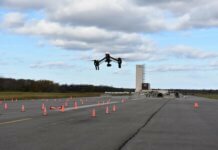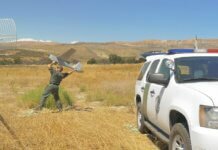The North Carolina Department of Transportation (NCDOT) has established best practices and recommended policies for agencies using unmanned aircraft systems (UAS) in first response, such as conducting search-and-rescue operations or surveying after a flood.
The final report was released after the NCDOT’s division of aviation held a workshop with emergency management personnel from around the state in January.
“The exercise produced several key findings and recommendations that support the immediate, safe integration of drones into the National Airspace System,” explains Bobby Walston, director of the aviation division. “This will make our state’s public agencies more effective as drone operations become more routine.”
The department notes that some advantages of using UAS in disaster response include as follows:
- Navigating unreachable locations more closely and easily compared with larger aircraft;
- Providing a quicker response time;
- Taking away the human risk that can come with operating larger aircraft; and
- Conducting search-and-rescue operations less expensively.
By North Carolina General Statute, NCDOT says its division of aviation has a mission to promote aviation safety and is leading statewide drone education and training through a series of exercises and workshops.
“The need for this type of exercise has never been stronger,” adds Walston. “Ensuring the use of this technology is properly coordinated is top priority in guaranteeing operations are conducted safely and effectively.”
The department notes that the Federal Aviation Administration has exclusive authority over the use of airspace in the U.S., including the airspace used by drones; however, the NCDOT has authority to implement and manage regulations that pertain to state laws concerning operations within North Carolina.
“The division of aviation’s goal is to ensure that drones flying within North Carolina are flown safely and responsibly,” the department says. “The purpose of this resource page is to provide state and local governments the appropriate tools to create and manage UAS programs to support their specific operational needs.”
The best practices report – which covers rules and regulations, necessary certifications, program-planning, and communications – can be found here.










